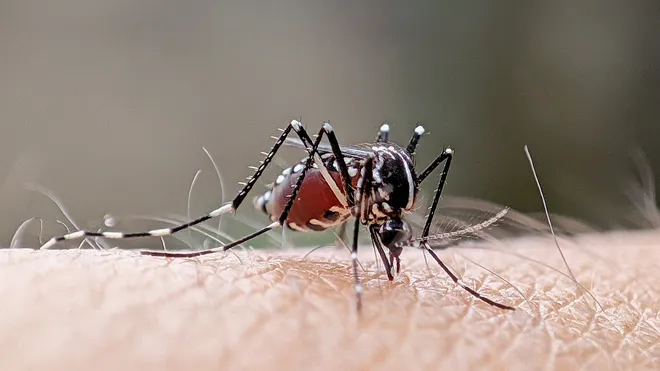A new health scare is spreading across the United States, with more than 21 confirmed cases of a rare and potentially deadly virus known as Sloth Fever. This alarming development has sparked concern among health officials and the public alike. Here’s everything you need to know about Sloth Fever, how it spreads, and what you can do to protect yourself and your loved ones.

What is Sloth Fever?
Sloth Fever is a zoonotic disease, meaning it is transmitted from animals to humans. The virus is believed to originate from sloths, hence the name, but can also be carried by other wildlife species. While the exact origin of the virus remains under investigation, researchers suspect that the virus may have been transmitted through close contact with infected animals or their droppings.
How Does Sloth Fever Spread?
The virus is primarily spread through direct contact with infected animals or their bodily fluids. This includes handling sloths or other wildlife without proper protective gear or coming into contact with contaminated surfaces. In some cases, the virus can also spread through respiratory droplets, similar to how the flu spreads. This means that close contact with an infected person, especially in crowded or enclosed spaces, can increase the risk of transmission.
Symptoms of Sloth Fever
Sloth Fever presents with symptoms that can range from mild to severe, depending on the individual’s immune response and the stage of the infection. Common symptoms include:
- Fever: A sudden onset of high fever is one of the earliest signs of Sloth Fever.
- Fatigue: Extreme tiredness and lethargy are common, often lasting for several days.
- Muscle Aches: Patients may experience severe muscle pain, particularly in the back and limbs.
- Headache: A persistent headache, often accompanied by sensitivity to light, is another common symptom.
- Nausea and Vomiting: Gastrointestinal symptoms, including nausea and vomiting, may occur in more severe cases.
In more advanced cases, Sloth Fever can lead to complications such as respiratory distress, neurological issues, and organ failure. If left untreated, the virus can be fatal.
Who is at Risk?
While anyone can contract Sloth Fever, certain groups are at higher risk of severe illness. These include:
- Immunocompromised Individuals: People with weakened immune systems, such as those undergoing chemotherapy or living with chronic illnesses, are more susceptible to severe symptoms.
- Elderly Individuals: Older adults are more likely to experience complications from the virus due to their age-related decline in immune function.
- Pregnant Women: Pregnant women are advised to take extra precautions, as the virus may pose risks to both the mother and the unborn child.
- Individuals with Pre-existing Conditions: Those with underlying health conditions, such as diabetes or heart disease, may experience more severe symptoms.
Prevention and Protection
Given the severity of Sloth Fever, taking preventive measures is crucial to protect yourself and your community. Here are some recommended steps:
- Avoid Direct Contact with Wildlife: Refrain from handling wild animals, particularly sloths and other wildlife species that may carry the virus. If contact is necessary, always wear protective gear such as gloves and masks.
- Practice Good Hygiene: Wash your hands thoroughly with soap and water after handling animals or coming into contact with potentially contaminated surfaces. Hand sanitizers with at least 60% alcohol can also be effective.
- Disinfect Surfaces: Regularly disinfect surfaces that may have come into contact with infected animals or their droppings. This includes areas where pets may have interacted with wildlife.
- Limit Exposure in Crowded Areas: To reduce the risk of human-to-human transmission, avoid crowded or enclosed spaces where close contact with others is likely.
- Monitor for Symptoms: If you develop any symptoms of Sloth Fever, seek medical attention immediately. Early detection and treatment can significantly improve outcomes.
Treatment Options
Currently, there is no specific antiviral treatment for Sloth Fever. Treatment focuses on managing symptoms and supporting the body’s immune response. This may include:
- Rest and Hydration: Patients are advised to rest and stay hydrated to help the body fight the virus.
- Fever Reducers: Medications such as acetaminophen or ibuprofen may be used to reduce fever and alleviate pain.
- Oxygen Therapy: In severe cases where respiratory distress occurs, oxygen therapy may be necessary to support breathing.
- Hospitalization: Patients with severe symptoms or complications may require hospitalization for more intensive care, including intravenous fluids and monitoring.
What to Do If You Suspect Infection
If you or someone you know exhibits symptoms consistent with Sloth Fever, it’s important to act quickly:
- Isolate: Isolate the affected individual to prevent the spread of the virus to others.
- Contact a Healthcare Provider: Reach out to a healthcare professional for advice on the next steps. They may recommend testing to confirm the presence of the virus.
- Follow Public Health Guidelines: Adhere to any guidelines or recommendations from public health authorities, including quarantine or isolation measures if advised.
The Broader Impact
The emergence of Sloth Fever has raised concerns about the potential for a larger outbreak. Public health officials are closely monitoring the situation and working to contain the spread of the virus. In the meantime, individuals are encouraged to stay informed and take proactive steps to protect themselves and their communities.
As we continue to navigate this new health threat, it’s important to remember that early detection, prevention, and proper hygiene are key to controlling the spread of Sloth Fever. By staying vigilant and informed, we can collectively reduce the impact of this virus and safeguard public health.
For more in-depth health news and updates, visit Digital Digest for the latest coverage on emerging health issues and expert advice.




